By Reuben HS Bond
The following article contains images and themes that some may find distressing.
What is the first image that springs to mind when you think of the First World War? Is it mud, blood, and barbed wire? Perhaps it makes you think of moustachioed, incompetent, aristocratic generals sending the poor working classes over the top to their deaths. While there certainly is some truth in these caricatures, they are, as a whole, lazy stereotypes that persist throughout Britain’s popular memory and have become part of our national identity. Words have become shortcuts, phrases we communicate to convey an assumed meaning without debating their validity. Going over the top is synonymous with futility, Haig with incompetent failure, and even the term the Great War has come to mean little more than muddy trenches in France and Belgium.[1] The First World War has become a cultural reference point in our nation’s history, one from which we have constructed our own identity and mythology.

Why study the First World War?
Initially, this project set out to answer the question of why these stereotypes persist and why the idea of Lions led by Donkeys remains so popular to the public despite the last thirty years of historiography disproving this argument.[2] However, as I researched this, a bigger, more critical question emerged: why is there such a gulf between academic writing on the Great War and public memory and discourse? As Heathorn argues, “the de-bunking of myths does not explain the evolving meaning of the war for its survivors or for its subsequent generations”.[3] The facts of the Great War have become almost immaterial to the public. The war holds its special place in our national consciousness because of the meaning and values we have attached to it, turning a conflict into a parable to supposedly deliver morals and lessons for the future. Throughout this article, I will explore this further using my hypothesis that “the public perception of the First World War is the result of remembrance being conducted through the prism of contemporary events”. We will explore the centrepieces of the 50th and 100th anniversaries of the war, how the war is taught in schools, and the effect of Iraq, Afghanistan and Vietnam on how modern warfare affects our view of the past.
It is most useful to view the mythology of the Great War as a “distortion, not a fabrication”.[4] While I will argue that the 1960s were pivotal in shaping what Todman calls “the negative memory” of the Great War, these were not new views.[5] There was no homogenous experience of the Great War; for some, the horror scarred them physically and mentally for the rest of their life. For others, it marked the transition from boyhood to manhood, and they felt a sense of achievement and even enjoyment from the camaraderie they experienced.[6] The views of the 1960s were not new, but the context of a rebellious, anti-establishment Britain in a social revolution pushed these negative views to the forefront. Similarly, the centenary was marred by the British army’s bloody experience in Afghanistan and Iraq and politicians and social commentators politicising remembrance to further their own goals. It is impossible to separate the discourse of the First World War from current affairs due to the place it occupies in our cultural heritage.
How did television influence the 50th anniversary?
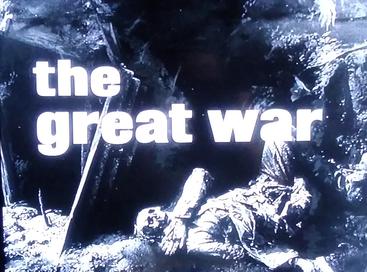
with the lone body’s death stare. Source: https://en.wikipedia.org/wiki/The_Great_War
_%28TV_series%29
The centrepiece of the 50th anniversary was the documentary series The Great War; this series was “the most spectacular success in televisual history” regarding viewing figures and public response.[7] Remembrance moved from a formal ceremony in churches to being shared by families on the sofa in their living rooms. For the first time, the British public was shown where and how their fathers and grandfathers lived, fought, and died. The “masterly” script was written by John Terraine and Correlli Barnett, which made it the first Great War documentary to be written by professional historians and the first to include the voices of veterans.[8] However, the narration was overshadowed by the images and videos presented throughout the documentary.[9] It is still, by modern standards, quite graphic, something which would have been especially shocking to a 1960s audience seeing the conflict for the first time.
The Great War enabled the conflict to finally escape from the pages of books on grand strategy and politics and interacted with viewers on a personal level curious about their family history. As the conflict was only fifty years previous, every family either knew a survivor of the war or knew of someone who did not return. The images on their television screens “integrated these war stories into their own family narratives”.[10] For instance, the Somme transformed from letters on a piece of paper into a pockmarked scar on the French landscape, full of mud, blood, and bodies that cemented its place as a national tragedy. As this series was at the start of the public commemoration in 1964, the public’s reaction to the next four years was grounded in the images they saw for the first time during The Great War.
Watch the opening title sequence for The Great War, see the images and hear the musical arrangement that started the program. It is easy to see how it pulled at the heartstrings of the nation, and made history feel personal. Consider the lone soldier staring at the camera, it is as if he is looking into the audience with pain upon his face. Is it any wonder that many claimed this figure was their father?
The brilliance of The Great War, and why it resonated so much with people, is that it allowed families to fill in the gaps in their own family history. It encouraged empathy but did not provide the tools to guide it.[11] The documentary scenes asked people to imagine how their relations felt going off to war. The problem with such an emotional response is that we are encouraged to “project our own feelings … towards the First World War and … war in general onto a historical figure”, even though it is impossible to discern what they actually felt.[12] As we cannot know exactly how our ancestors felt, what we are actually doing is imagining how we would feel in their position. Thus, when watching The Great War, the values and culture of 1960s Britain were inserted in a world that looked very different 50 years previously. In an era of decolonisation, radical social change, and anti-establishment feeling, the death of a lost generation could easily be blamed on ‘the elites’ in a quest for their last imperial hurrah. This clearly isn’t true when you consider the horrific casualty rates of junior officers, which included the Prime Minister’s own son. Fact and memory are not the same. The war wasn’t just remembered but made sense of through the moral standards of the 1960s. It is easy then to see how an audience trying to make sense of why their relatives had died could readily accept class-based narratives as that was the reality they were living through. So even a TV documentary about the past, showing images of the past, with a script written by professional historians, was remembered and digested through the eyes and values of contemporary Britain.
How did art shape public reaction to the centenary?

“A deeply aestheticised, prettified
Jones, The Guardian
and toothless war memorial”
Arguably, the centrepiece of the centenary was the art instillation Blood Swept Lands and Seas of Red. Cumming’s work consisted of 888,246 ceramic poppies spilling over the top of the Tower of London and flooding its moat: one for every British and commonwealth death in the Great War. This work has proved controversial; critics have called it “a deeply aestheticised, prettified and toothless war memorial”.[13] They believe that the memorial is too clean and self-serving; it does not accurately reflect the horror of war and is too nationalist. However, Jones’ concern that the art does not accurately represent the First World War is ironic, as he only devotes a single paragraph to discussing the past. The article spends more time dismissing anyone moved by the art as a jingoist UKIP supporter, showing that Jones’ criticism has more to do with the current state of British politics than the war itself. Cummins describes each of his poppies as representing “fallen heroes who sacrificed their lives for us”.[14] He too is guilty of viewing the conflict through his politics; his art does not represent the 888,246 lives lost because each life deserves to be remembered but because they died in service of their country, sacrificing themselves for the Britain of today. The focus of both Jones and Cummins is not on the experience of the soldiers but on how they created the Britain of today.
Several art critics noted that the crowds which flocked to see the installation had almost become part of the spectacle itself.[15] Richardson believes that Blood Swept Lands does not represent the 888,246 British and Commonwealth lives lost so much as “the emotional reaction of its visitors”.[16] This shifts the emotional centre of the art from something internal, the lives lost, to something external, how the public emotes and comprehends the lives lost. Thus, this memorial provides a reflection on how the British view themselves. The decision to have the poppies flood out of the Tower of London, a highly historic and significant building in the history of Britain, seems to link nearly a thousand years of British history together.
Teaching the Great War beyond poetry?
For most people, the only time they will engage academically with the Great War is in school. The boundaries of the national curriculum also mean that this is the closest we get to a shared war memory across society. The “link between history and memory is especially salient in the educational system, which is responsible for implanting knowledge and values in the younger generation”.[17] Teachers do more than impart fact; they are “makers of cultural meaning”.[18] This means that teachers play a crucial role in passing on the cultural heritage and the perceived values of the First World War. When you consider that in schools, the majority of the Great War is not actually encountered in history lessons but in literacy through the work of the war poets, it is easy to see how the conflict is taught as a history of death, emotion, and values, rather than a history of war and international relations.
Arguably the First World War isn’t taught in British schools
Why is this important? While the 1914-1918 conflict is taught in British schools, arguably the First World War isn’t. The Eastern Front, Middle East, Africa, and Asia are all commonly missed out.[19] These omissions don’t stop on the Western Front either, with the Italians and, to a large extent, the French relegated to the footnotes. So, a world war is condensed down to two countries, Britain and Germany, and “what they learn can be summed up in one word: trenches”.[20] So, for most British people, thinking back to their history lessons means remembering blood, mud, machine guns, trenches, and incompetence.[21] The Somme receives extensive attention, whereas Verdun is often left out despite its intensity and role in causing the Battle of the Somme.[22] Arguably, the intense focus on the Somme throughout education is because its death toll has earned a special place within our national mythology. It reinforces British exceptionalism, the idea that our island story is somehow separate and unique. However, the cemeteries at Tyne Cot, Thiepval, and the Menin Gate tell us that Britain’s history and heritage very much lie on the European continent. If Verdun were to be taught alongside the Somme, it would challenge the idea that the Somme was somehow special and that Britain was exceptional in her suffering when, in reality, she suffered the least loss of life of the major belligerents. In fact, it would make it impossible for the First World War to be reduced to just Britain and Germany. It is unsurprising that in post-Brexit Britain, the government used the First World War to separate us further from Europe.
The government’s influence on the history curriculum in England has been clear, seeking to reform it along a “clear narrative of British progress” and promoting “British values”. This influence has led to tensions regarding “what history to teach” and the desire to reinvigorate a sense of shared values and halt the perception of national decline when certain views of the conflict have been criticised as unpatriotic and left-wing.[23] The government allocated significant resources for schools to mark the centenary of the First World War. Funding was made available for two pupils from every school to participate in a battlefield study. The CBBC commissioned multiple World War One specials, popular children’s authors published young adult novels, and drama departments encouraged students to participate in plays commemorating the Great War.[24] It is clear that the government saw the commemoration of the First World War as an opportunity to reinforce ‘British values’ in the next generation and create shared national memories of unity in a time of division in the wake of the Scottish independence reference, Brexit referendum, and austerity. This tells us that the school commemorations again reflect modern Britain just as much, if not more, than the actual conflict supposed to be remembered. The Great War was used as a vessel to sacralise the political.[25]
What role does the British Army play today?
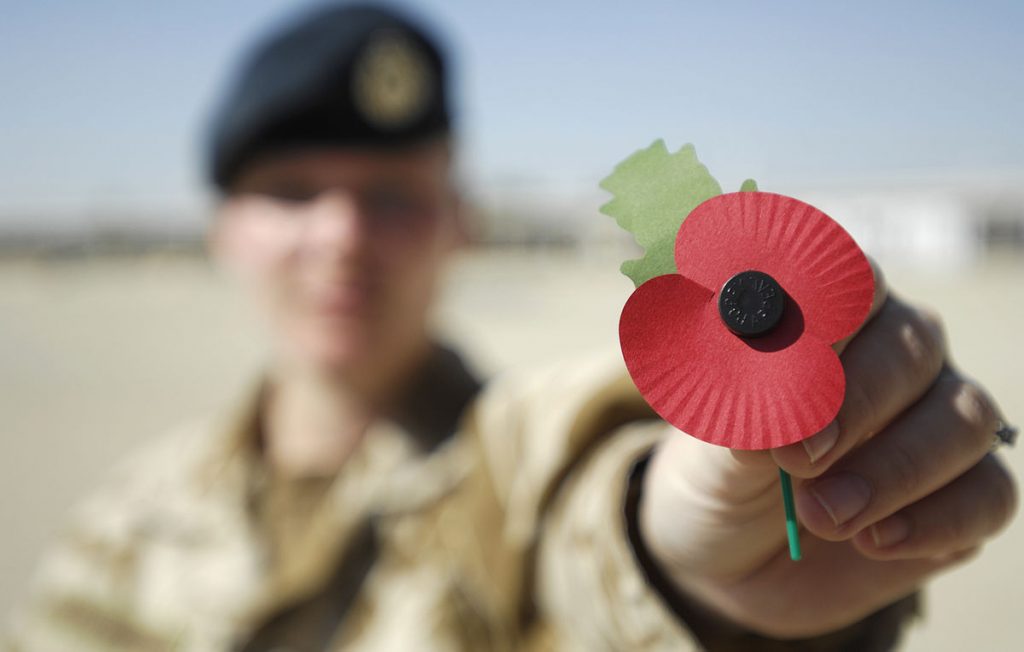
The image of the British army since the First World War has profoundly shaped how we remember the conflict. This is largely because during the ritual of remembrance, Britain remembers all her war dead regardless of conflict. The image of the muddy graves of the First World War is remembered in the same thought as coffins leaving the back of a plane in Brize Norton, bound together with the poppy. The link between the First World War is even stronger when you consider that the profit from selling the ceramic poppies of Blood Swept Lands was donated to armed forces charities.[26] As McCartney argues, “the explicit linking of operations in Afghanistan and Iraq with the First World War has reinforced the victim image” of the soldier for each conflict.[27] The wars in Iraq and Afghanistan were criticised widely for being unwinnable, a waste of life, and severely mismanaged. It is easy then to form links between the modern soldiers of the British army and those of the Great War. This is especially true when you consider war dead, old and recent, are remembered on the same day, wearing the same symbols, and names from Afghanistan and Iraq are added to monuments erected for the First World War.[28] Crucially, viewing soldiers as victims denies them agency but also responsibility for their actions. Thus, just as with the First World War, it makes it easier to support the troops but not the mission on the one hand and criticise the government and senior leadership of the army on the other.[29] The view of the First World War soldier has thus been shaped by how we remember the recent conflicts of the British army.
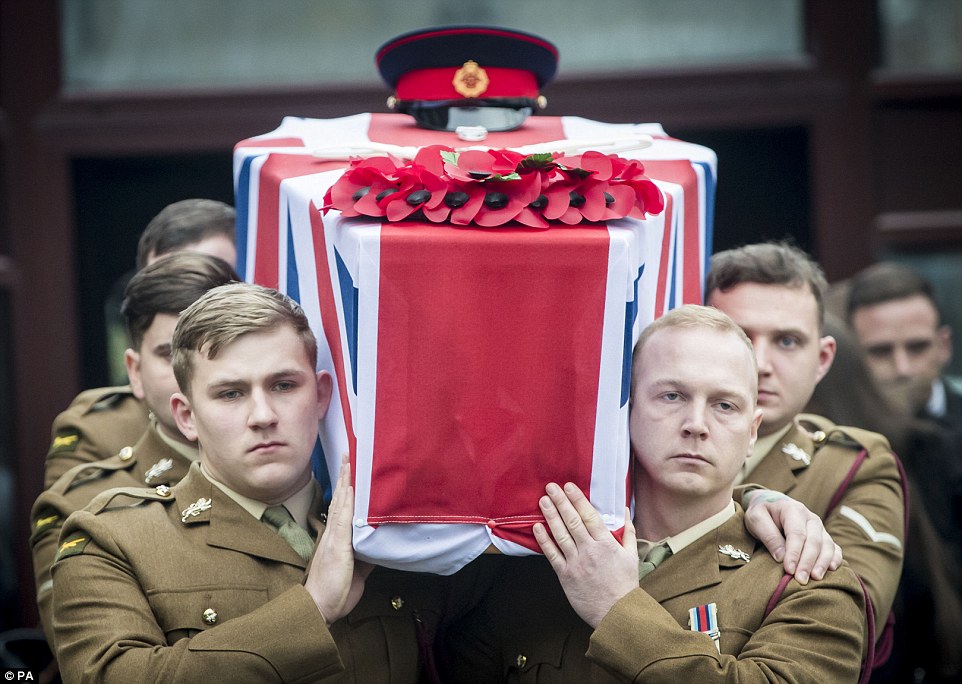
The theme of the soldier as a victim was just as prevalent on the 50th anniversary of the First World War but for different reasons which reflect the different social context. The commemorations in the 1960s took place in the context of class war, hostility towards traditional authority, and anti-imperialist Britain losing her empire. Danchev argues that agents of popular culture hijacked how we remember the Great War, seeking to refashion it for their own purposes.[30] The pacifist movement created this idea of the Great War as a bad war and a symbol of unrestrained evil, thus transforming The Great War into a lesson with a “moral message” rather than a conflict.[31] While not a British war, the conduct of the Americans in Vietnam was broadcast on a global scale. Here too we can see parallels between a victimised soldier and their political overlords bent on interfering with international matters that were not their concern. In the context of this anti-imperial, pacifist Britain, it is clear to see how the idea that the First World War was characterised by working-class men murdered for a dying empire became popular with the public.
Beyond Britain?
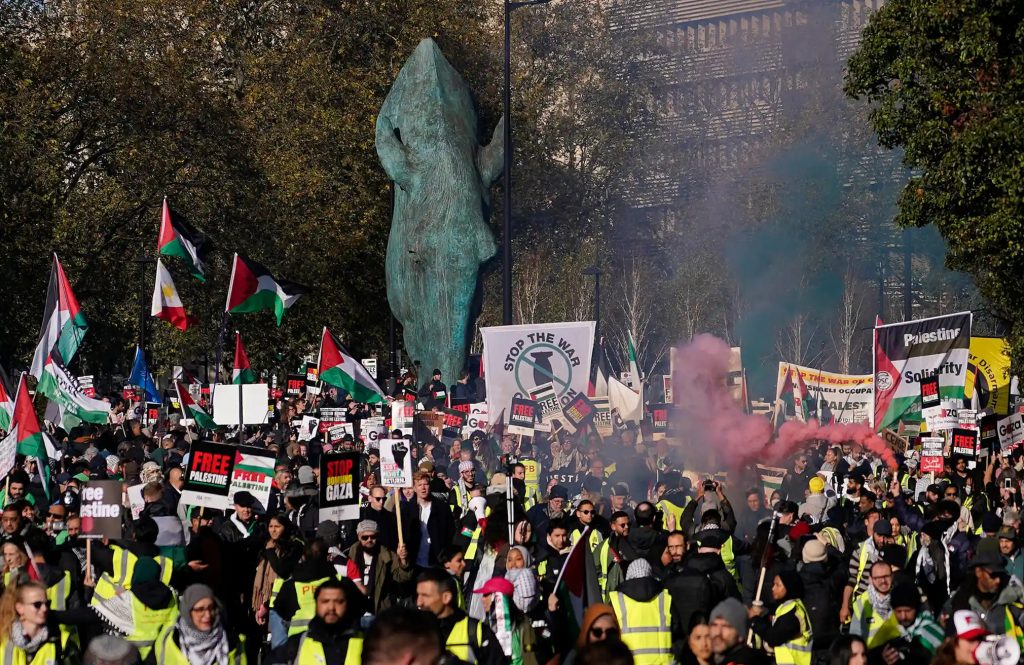


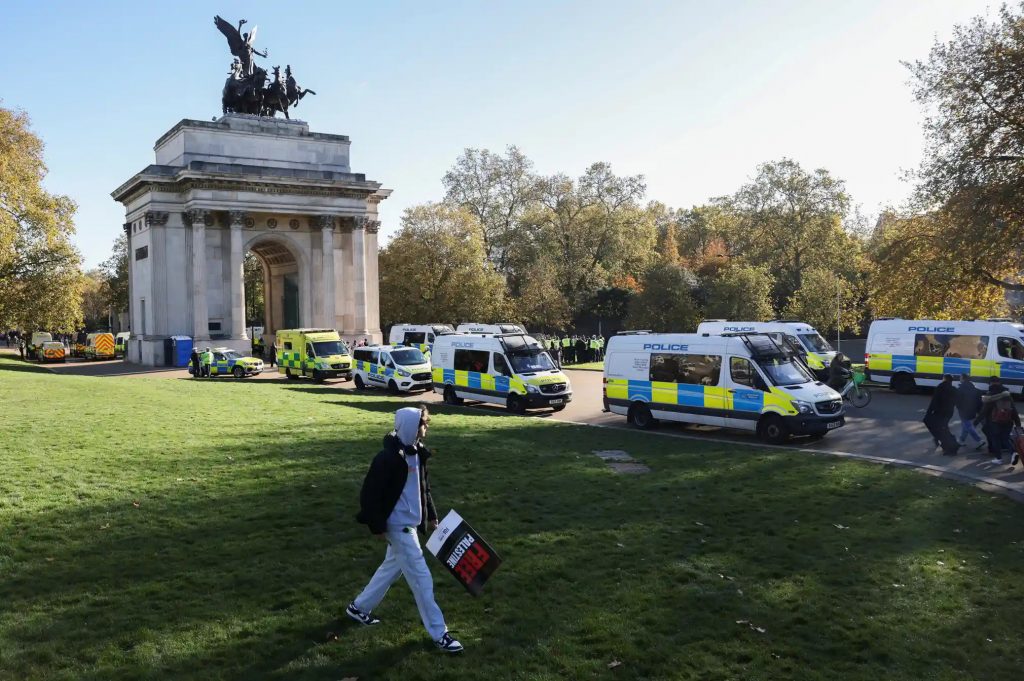
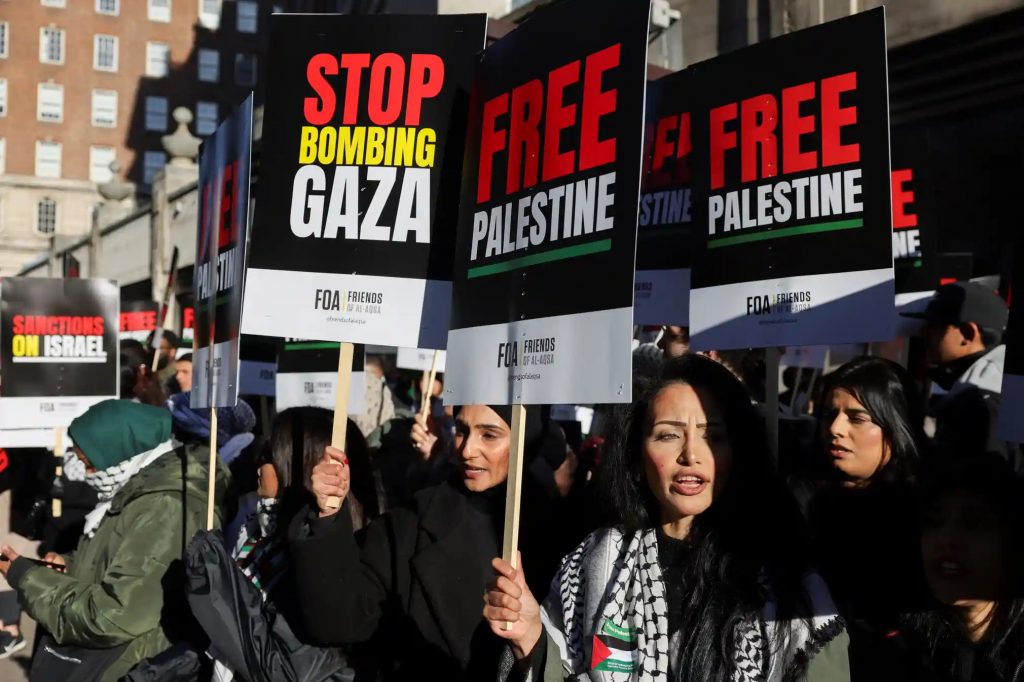

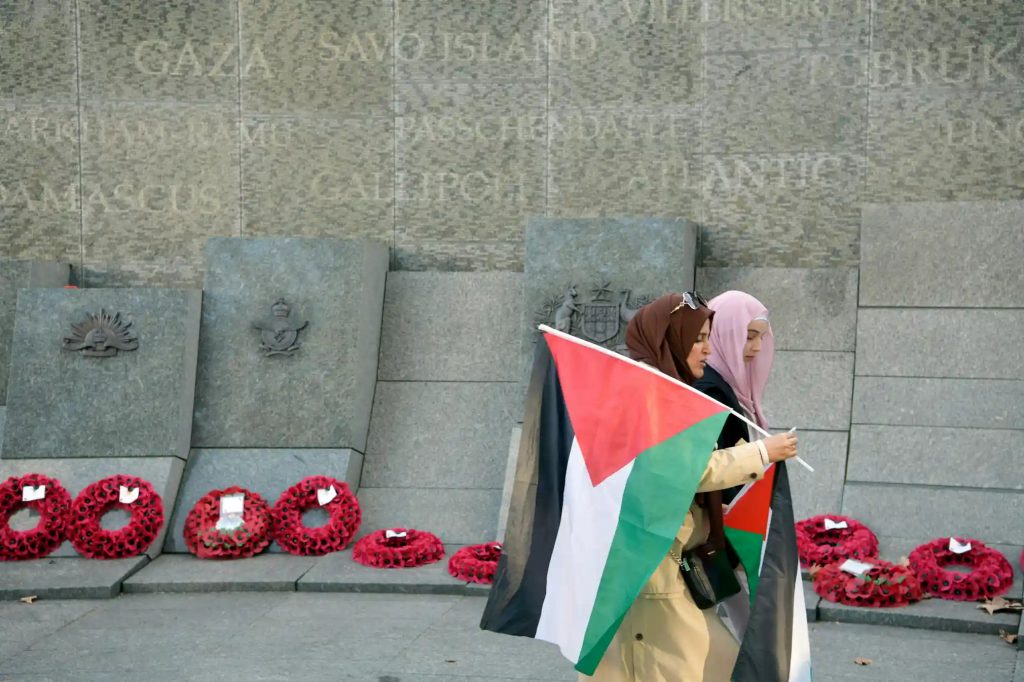
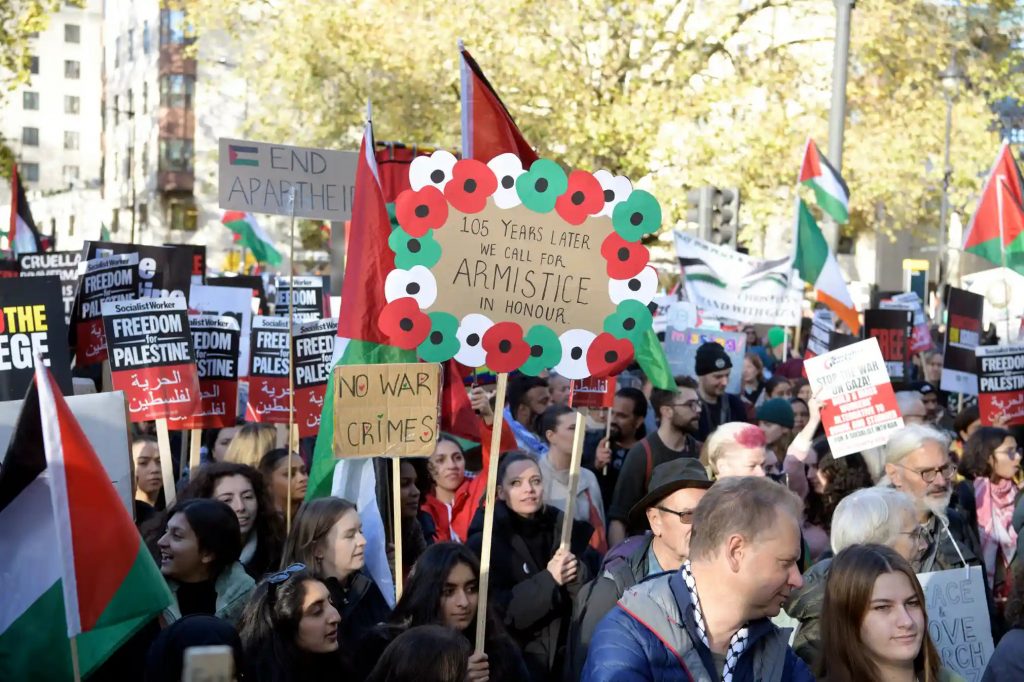
The most recent Armistice Day in 2023 provides another example of how remembrance is becoming decreasingly detached from its intended purpose. The pro-Palestinian march argued that calling for peace on Armistice Day was an appropriate time; after all, it was the day that ended the supposed war to end all wars.[32] However, by doing so, the dialogue leading up to the 11th of November moved away from remembrance to current affairs. The First World War was mentioned but only to justify the march by creating this supposed pacifist link to the past. This politicisation spreads across the political spectrum. Newspaper articles calling for the march to be banned claimed it would be disrespectful to Britain’s war dead. However, these articles too are devoid of any actual analysis of the Great War; they too focus on politicising the colossal loss of life rather than remembering the conflict. It also devalues the ‘British Values’ that the government has used the Great War to push through in secondary education. Democracy, the rule of law, and the right to protest are arguably the values the government claims the First World War generation died for.[33] This suggests that successive governments have used the Great War as a Trojan horse to project national unity through supposed shared values rather than actually upholding these values. The debate over whether the 11th of November is an appropriate time for activism will undoubtedly continue, and the purpose of this article is not to pass judgment. However, it reveals that regardless of political affiliation, as a nation, Britain is becoming increasingly wrapped up in a mythology that we continually try to weave into contemporary Britain to justify our actions.
What does this all mean?
So, what is your first ‘memory’ of the Great War? Is it trenches, mud, blood, and poppies, or maybe moustachioed generals, whistle blasts and machine guns? These narratives and images are potent in our society, but as we have seen, their presence has as much to do with contemporary Britain as the war itself. There is a clear and definite linkage between current affairs and remembrance; in particular, the trauma of Afghanistan and Iraq have shaped the 100th anniversary, while the 50th anniversary was shaped by social change and the formation of modern Britain. The First World War is used as a point of comparison for trauma, division, and struggle. The mythology that has been created has its roots in the truth but has been distorted by a variety of actors, the government, the media, the public, and even veterans themselves. The First World War is remembered through the prism of contemporary events because it is the only way we can try to relate to a horror we have never experienced. While there are apparent issues for the historian that have been presented, it is worth asking, is it wrong that we over-personalise remembrance if it means that we continue to remember the Great War generation?
[1] Todman, D. The Great War: Myth and Memory (London, Bloomsbury Academic, 2014), p. 227.
[2] McCartney, H B. ‘The First World War Soldier and His Contemporary Image in Britain’, International Affairs, 90 (2014) p. 299.
[3] Heathorn, S. ‘The Mnemonic Turn in the Cultural Historiography of Britain’s Great War’, The Historical Journal, 48 (2005) p. 1104.
[4] Todman, The Great War: Myth and Memory, p. 221.
[5] Todman, The Great War: Myth and Memory, pp. 220-28.
[6] Watson, J. Fighting Different Wars: Experience, Memory, and the First World War in Britain (Cambridge, Cambridge University Press, 2004), passim.
[7] Winter, J. ‘British and Commonwealth Historiography of World War I 1914–2018’, in Writing the Great War, edited by C Cornelissen and A Weinrich (Oxford, Berghahn Books, 2021), p. 98.
[8] Hanna, E. ‘A Small Screen Alternative to Stone and Bronze: The Great War Series and British Television’, European Journal of Cultural Studies, 10 (2007) p.105.
[9] Hanna. ‘A Small Screen Alternative to Stone and Bronze: The Great War Series and British Television’.
[10] Winter, ‘British and Commonwealth Historiography of World War I 1914–2018,’ p. 101.
[11] McCartney. ‘The First World War Soldier and His Contemporary Image in Britain’, p. 306.
[12] McCartney. ‘The First World War Soldier and His Contemporary Image in Britain’, pp. 305-06.
[13] Jones, J. ‘The Tower of London Poppies Are Fake, Trite and Inward-Looking: A Ukip-Style Memorial’. The Guardian 27 Dec 2023 28 October 2014. Available at: https://www.theguardian.com/artanddesign/jonathanjonesblog/2014/oct/28/tower-of-london-poppies-ukip-remembrance-day [Accessed 27 Dec 2023].
[14] ‘Interview: Paul Cummins – Blood Swept Lands & Seas of Red’. Johnson Tiles 28 Dec 2023 10 Nov 2014. Available at: https://www.johnson-tiles.com/blog/2014/11/interview-paul-cummins-blood-swept-lands-seas-red/# [Accessed 28 Dec 2023].
[15] Hardman, R. ‘The Left Sneered. But These Poppies Reconnect Us to a Generation of Heroes We Never Knew’. The Daily Mail 23 Dec 2023 7 Nov 2014. Available at: https://www.dailymail.co.uk/debate/article-2826070/The-Left-sneered-poppies-reconnect-generation-heroes-never-knew-writes-ROBERT-HARDMAN.html [Accessed 23 Dec 2023].
[16] Richardson, J. ‘Sentimental Witnesses: Modern War Representation and the Eighteenth Century’, Mosaic, 51 (2018) p. 140.
[17] Pennell, C. ‘Learning Lessons from War? Inclusions and Exclusions in Teaching First World War History in English Secondary Schools’, History and Memory, 28 (2016) p. 40.
[18] Pennell. ‘Learning Lessons from War? Inclusions and Exclusions in Teaching First World War History in English Secondary Schools’, p. 40.
[19] Lisher, J et al. ‘Teaching the First World War: What Europe’s Pupils Learn About the Conflict’. The Guardian 30 Nov 2023 16 Jan 2014. Available at: https://www.theguardian.com/world/2014/jan/16/teaching-first-world-war [Accessed 30 Nov 2023].
[20] Lisher et al., “Teaching the First World War.”
[21] Lisher et al., “Teaching the First World War.”
[22] Lisher et al., “Teaching the First World War.”
[23] Shipman, T. ‘Michael Gove Blasts ‘Blackadder Myths’ About the First World War Spread by Television Sit-Coms and Left-Wing Academics’. The Daily Mail 12 Dec 2023 2 Jan 2014. Available at: https://www.dailymail.co.uk/news/article-2532923/Michael-Gove-blasts-Blackadder-myths-First-World-War-spread-television-sit-coms-left-wing-academics.html [Accessed 12 Dec 2023].
[24] Pennell. ‘Learning Lessons from War? Inclusions and Exclusions in Teaching First World War History in English Secondary Schools’, p. 40.
[25] Pennell. ‘Learning Lessons from War? Inclusions and Exclusions in Teaching First World War History in English Secondary Schools’, p. 38.
[26] Fishwick, C. ‘The Tower of London Poppies Are Not ‘a Ukip-Style Memorial’, Say Volunteers’. The Guardian 1 Jan 2024 1 Nov 2014. Available at: https://www.theguardian.com/uk-news/2014/nov/01/the-tower-of-london-poppies-are-not-a-ukip-style-memorial-say-volunteers [Accessed 1 Jan 2024].
[27] McCartney. ‘The First World War Soldier and His Contemporary Image in Britain’, p. 303.
[28] McCartney. ‘The First World War Soldier and His Contemporary Image in Britain’, p. 312.
[29] McCartney. ‘The First World War Soldier and His Contemporary Image in Britain’, p. 312.
[30] Danchev, A. ‘Bunking and Debunking’, in The First World War and British Military History, edited by B Bond (Oxford, Oxford University Press, 1991), passim.
[31] Heathorn. ‘The Mnemonic Turn in the Cultural Historiography of Britain’s Great War’, p. 1118.
[32] Skopeliti, C. ‘‘Armistice Day Means Ceasefire’: Voices of Those Heading to London’s Pro-Palestine March’. The Guardian 1 Jan 2024 9 Nov 2023. Available at: https://www.theguardian.com/world/2023/nov/09/london-pro-palestine-armistice-day-march [Accessed 1 Jan 2024].
[33] Hanna, E et al. Reflections on the Centenary of the First World War: Learning and Legacies for the Future (Colchester, University of Essex, 2021), p. 22.
Bibliography
Danchev, A. ‘Bunking and Debunking’, in The First World War and British Military History, edited by Brian Bond (Oxford, Oxford University Press, 1991), pp. 283-88.
Fishwick, C. ‘The Tower of London Poppies Are Not ‘a Ukip-Style Memorial’, Say Volunteers’. The Guardian 1 Jan 2024 1 Nov 2014. Available at: https://www.theguardian.com/uk-news/2014/nov/01/the-tower-of-london-poppies-are-not-a-ukip-style-memorial-say-volunteers [Accessed 1 Jan 2024].
Hanna, E. ‘A Small Screen Alternative to Stone and Bronze: The Great War Series and British Television’, European Journal of Cultural Studies, 10 (2007) pp. 89-111.
Hanna, E, Hughes, L, Noakes, L, Pennell, C, and Wallis, J. Reflections on the Centenary of the First World War: Learning and Legacies for the Future (Colchester, University of Essex, 2021).
Hardman, R. ‘The Left Sneered. But These Poppies Reconnect Us to a Generation of Heroes We Never Knew’. The Daily Mail 23 Dec 2023 7 Nov 2014. Available at: https://www.dailymail.co.uk/debate/article-2826070/The-Left-sneered-poppies-reconnect-generation-heroes-never-knew-writes-ROBERT-HARDMAN.html [Accessed 23 Dec 2023].
Heathorn, S. ‘The Mnemonic Turn in the Cultural Historiography of Britain’s Great War’, The Historical Journal, 48 (2005) pp. 1103-24.
‘Interview: Paul Cummins – Blood Swept Lands & Seas of Red’. Johnson Tiles 28 Dec 2023 10 Nov 2014. Available at: https://www.johnson-tiles.com/blog/2014/11/interview-paul-cummins-blood-swept-lands-seas-red/# [Accessed 28 Dec 2023].
Jones, J. ‘The Tower of London Poppies Are Fake, Trite and Inward-Looking: A Ukip-Style Memorial’. The Guardian 27 Dec 2023 28 October 2014. Available at: https://www.theguardian.com/artanddesign/jonathanjonesblog/2014/oct/28/tower-of-london-poppies-ukip-remembrance-day [Accessed 27 Dec 2023].
Lisher, J, Roder, I, Schäffer, F, Dzierzgowska, A, and Sandrucci, R. ‘Teaching the First World War: What Europe’s Pupils Learn About the Conflict’. The Guardian 30 Nov 2023 16 Jan 2014. Available at: https://www.theguardian.com/world/2014/jan/16/teaching-first-world-war [Accessed 30 Nov 2023].
McCartney, H B. ‘The First World War Soldier and His Contemporary Image in Britain’, International Affairs, 90 (2014) pp. 299-315.
Pennell, C. ‘Learning Lessons from War? Inclusions and Exclusions in Teaching First World War History in English Secondary Schools’, History and Memory, 28 (2016) pp. 36-70.
Richardson, J. ‘Sentimental Witnesses: Modern War Representation and the Eighteenth Century’, Mosaic, 51 (2018) pp. 139-55.
Shipman, T. ‘Michael Gove Blasts ‘Blackadder Myths’ About the First World War Spread by Television Sit-Coms and Left-Wing Academics’. The Daily Mail 12 Dec 2023 2 Jan 2014. Available at: https://www.dailymail.co.uk/news/article-2532923/Michael-Gove-blasts-Blackadder-myths-First-World-War-spread-television-sit-coms-left-wing-academics.html [Accessed 12 Dec 2023].
Skopeliti, C. ‘‘Armistice Day Means Ceasefire’: Voices of Those Heading to London’s Pro-Palestine March’. The Guardian 1 Jan 2024 9 Nov 2023. Available at: https://www.theguardian.com/world/2023/nov/09/london-pro-palestine-armistice-day-march [Accessed 1 Jan 2024].
Todman, D. The Great War: Myth and Memory (London, Bloomsbury Academic, 2014).
Watson, J. Fighting Different Wars: Experience, Memory, and the First World War in Britain (Cambridge, Cambridge University Press, 2004).
Winter, J. ‘British and Commonwealth Historiography of World War I 1914–2018’, in Writing the Great War, edited by Christoph Cornelissen and Arndt Weinrich (Oxford, Berghahn Books, 2021), pp. 95-113.

